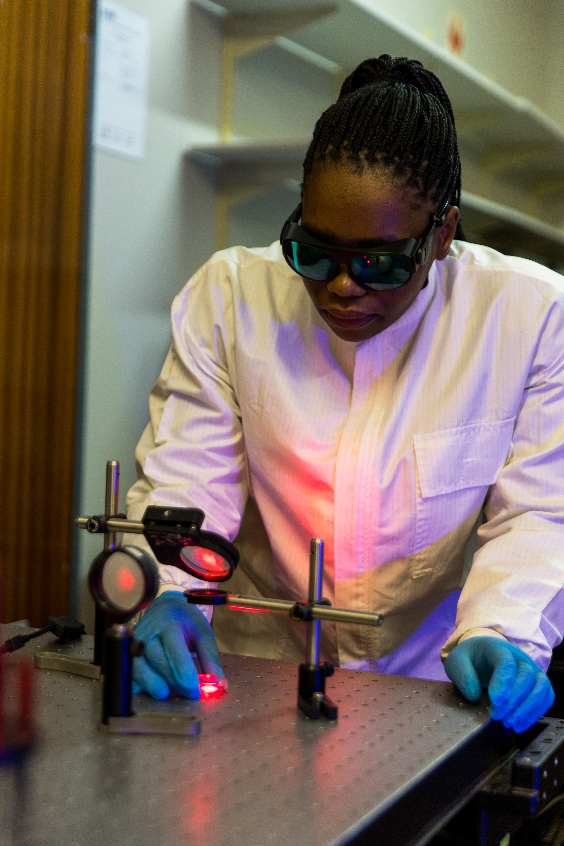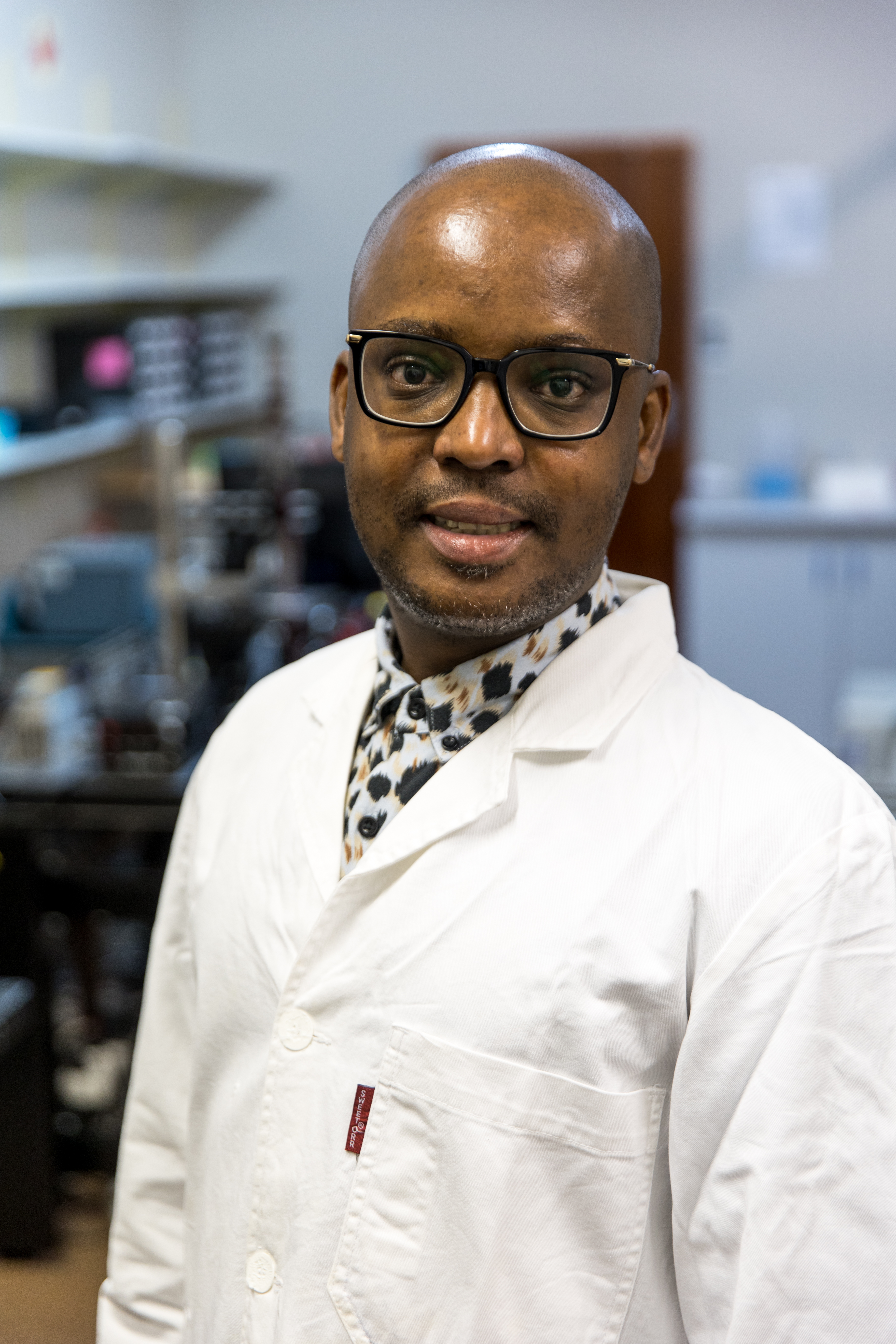Advanced Search
Search Results
Luleka Mngwengwe
Full Profile
This study determines the effect of low-level laser therapy on SARS-CoV-2 infected HEK293/ACE2 cells and compares these cells to uninfected ones. SARS-CoV-2 infected and uninfected HEK293/ACE2 cells will be laser irradiated at different doses and the effects of laser radiation on the cells and the virus will be evaluated using luciferase assay and cytotoxicity assays.

Enose Moholisa
Full Profile
The study is about simulation and grid integration, with special focus on photovoltaic (PV) integration to an existing distribution network. Issues and impacts related to PV grid integration are investigated and analysed. Steady-state simulation results of the network performance before and after the integration of PV plants are compared.

Londiwe Motibane
Full Profile
The South African additive manufacturing market has grown substantially in the past decade. The CSIR’s capabilities have matured to include machine fabrication, the manufacturing of critical parts in the biomedical, aerospace, automotive and mining industries, as well as the manufacturing of polymer, plastic and resin parts for all sorts of industries and applications, including small, micro and medium-sized entities. Selective laser melting (SLM) is a powder bed fusion process in metal additive manufacturing. It uses laser power to melt and consolidate metal powders for near shape and complex components. SLM commercial systems are widely available to produce parts in bulk. The Aeroswift machine is a South African built, novel high-speed SLM system. Its novelty lies in the substantially faster building rates achieved through a high-power laser. It also boasts a large-build bed capable of producing large parts or many small parts. It offers higher heat input compared to the low heat input used in commercial SLM systems. The integrity and quality of Aeroswift components in terms of mechanical properties are compared to those produced on a commercial SLM system. The tensile properties between the two systems did not differ substantially except for higher ductility in low heat input processing. The fracture toughness and fatigue crack growth rates were comparable. The study offered more confidence on the ability of the Aeroswift technology to produce acceptable parts for the aerospace industry. It is also indicative of the innovation capability to support and empower entrepreneurs.

On Monday, 27 June 2022, the Council for Scientific and Industrial research (CSIR) will host a virtual media briefing to celebrate young researchers who are championing research and technology deve
Makumbane Vhahangwele
Full Profile
Recently, there have been extensive studies on luminescent materials-based lanthanide ions for solar cells application. Down-conversion (DC) luminescent materials have been proposed to enhance the energy conversion efficiency of solar cells through photon conversion process. DC converts single high energy photons into two near-infrared photons. DC materials are actively explored for reducing the spectrum mismatch loss and enhancing the efficiency of solar cells. The most studied couple for c-Si solar cells are Ln3+ -Yb3+ (Ln = Pr, Er, Ho, Tb, Nd and Tm) activated different host materials.

Request for Quotation (RFQ) for the supply of Cortex XSOAR – security incident handling automation and orchestration software to the CSIR
Request for Proposals (RFP) For the development of comprehensive Processes, Standard Operating Procedures, and Guidelines for organisational Performance Information at the CSIR.
Khavhatondwi Rinah Netshiheni
Full Profile
Malnutrition is a major health concern caused by a deficiency or excessiveness of essential micronutrients (vitamins and minerals) in a diet. Malnutrition affects growth and development of children and increases their risk of death from common childhood illness. Children who are undernourished stand a great chance of being sick as compared to well-nourished children. Although micronutrient deficiency is not visible to the naked eye, it can greatly impact one’s wellbeing and is prevalent in South African child, WHO supported the above findings by reporting that 17% and 24% of South African children under the age of five have vitamin A deficiency and anaemia, respectively. The cause of malnutrition among South African children could be attributed to the high consumption of maize porridge, which is the staple food for most people in South Africa, as reported and maize contributes significantly to the dietary intake of 80 % of households in Limpopo. Regardless of all carbohydrates contained in maize grain, maize is not a good source of essential nutrients for the human body due to the bioavailability of minerals, which are vital for proper nutrition and health),often affected by phytic acid contained in the maize grain that interferes with the absorption of minerals. This study, therefore, investigated the effect of consuming instant-maize porridge fortified with Moringa oleifera leaves and termite powders on the nutritional status of children aged 3 to 5 years in the Thulamela Municipality, Limpopo Province, South Africa as this could be one of the sustainable strategies in alleviating malnutrition.

Media advisory
Charles Maphanga
Full Profile
In this study, mycolic acid TB antigen is used as a biorecognition element immobilized on a biosensing surface of a gold-coated biosensor chip to bind antimycobacterium tuberculosis antibodies. To enhance the detection signal during optical detection using a custom-built nanoplasmonic setup, gold nanoparticles are bioconjugated to secondary antibody and introduced on the surface of the biosensor chip.


